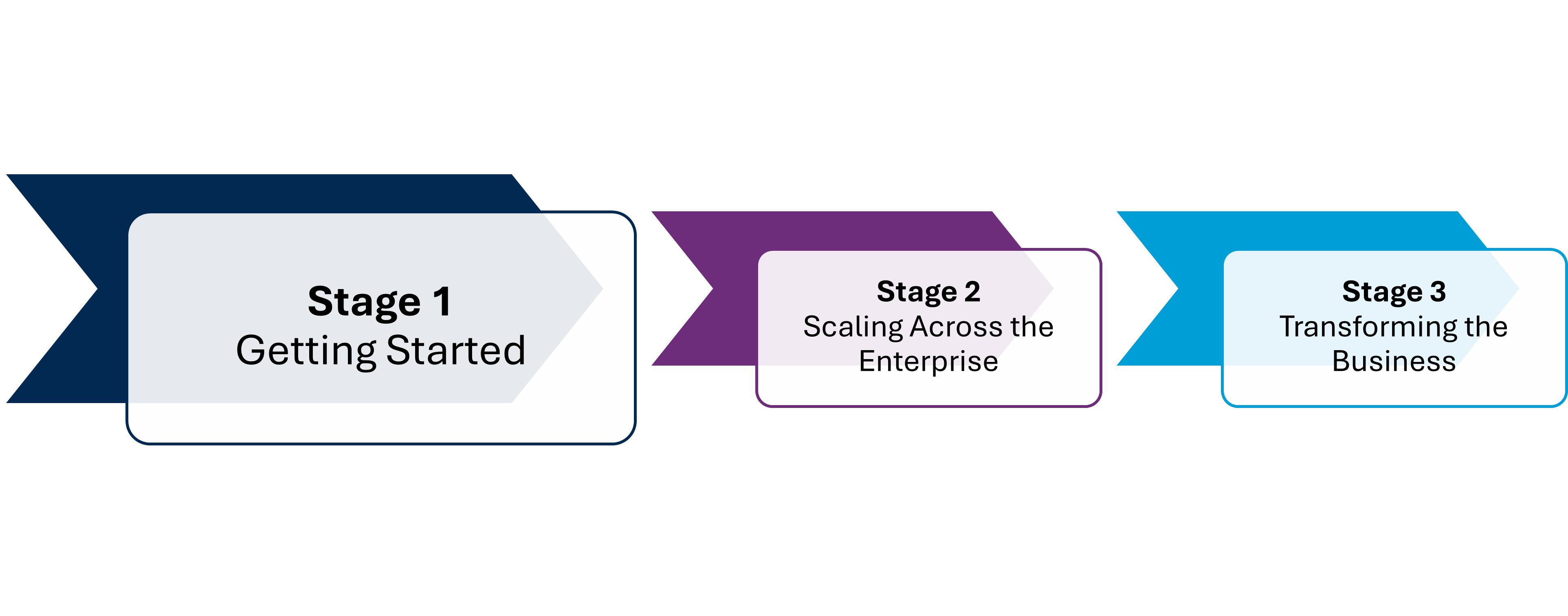
Navigating Your RPA Journey: From Beginning to Integration
Robotic Process Automation (RPA) significantly benefits businesses and corporations, promising increased efficiency and flexibility. As more companies recognize its potential, understanding how to effectively embark on an RPA journey becomes crucial. In this guide, we’ll explore the essential stages of an RPA journey and provide practical insights to help you navigate each step successfully.
Stage 1: Getting Started

The first phase of your RPA journey involves laying the groundwork and demonstrating the value of automation. Key steps include:
- Completing a Proof of Concept (PoC): Before committing to a full-scale implementation, it’s essential to provide management with concrete evidence of RPA’s benefits through a well-executed PoC.
- Building Teams and Approaches: Assemble a dedicated RPA team, often called a Center of Excellence (CoE), to lead implementation efforts and establish best practices.
- Understanding the Technology: Selecting the right RPA platform and developing an implementation framework is crucial for success. Invest time in familiarizing yourself with the necessary tools and resources.
- Building Pipeline and Capturing Opportunities: Identify easily achievable projects and prioritize those with significant potential for automation to gain momentum and quick wins.
- Securing Sponsorship and Establishing Metrics: Gain support from key stakeholders and define clear metrics to measure the success of your RPA initiative.
Stage 2: Scaling Across the Enterprise

In the second stage, the focus shifts to expanding automation efforts across the organization and managing automation at a larger scale. Key objectives include:
- Targeting Enterprise-wide Opportunities: Concentrate on automating core processes that significantly impact the organization’s performance and competitiveness.
- Broadening Skills and Capabilities: Expand your RPA team’s expertise to handle more complex automation tasks and leverage advanced technologies such as intelligent automation.
- Increasing Capacity and Throughput: Develop capabilities to manage multiple automation projects concurrently and maximize efficiencies through automation reuse.
- Embracing Continuous Improvement: Establish processes for ongoing learning, testing, and optimization to ensure continuous performance enhancement.
Stage 3: Transforming the Business

The final stage of the RPA journey involves leveraging automation to fundamentally change how work is performed across the organization. Key priorities include:
- Empowering Every Individual with RPA: Extend automation capabilities to every employee’s desktop, enabling them to automate tasks and streamline workflows.
- Fostering Adoption and Engagement: Invest in training and change management initiatives to ensure widespread adoption of RPA and maximize its impact.
- Cultivating Citizen Developers: Encourage employees at all levels to become proficient in automation, empowering them to identify and implement automation opportunities in their daily work.
- Ensuring Democratic Technology Adoption: Choose RPA solutions that facilitate collaboration and idea-sharing while maintaining control and governance over automation processes.
Conclusion
Embarking on an RPA journey holds significant promise for organizations seeking to improve efficiency and competitiveness. By following a structured approach and leveraging best practices at each stage, businesses can navigate the complexities of automation implementation and realize the full potential of RPA to transform their operations. As you embark on your automation journey, remember that the destination is not just automation itself but a more efficient, agile, and prosperous future for your organization.
For more information, reach out to Cybiant’s consultants by dropping a quick e-mail at info@cybiant.com to us.
Visit our Cybiant Knowledge Centre to find out more about the latest insights.
